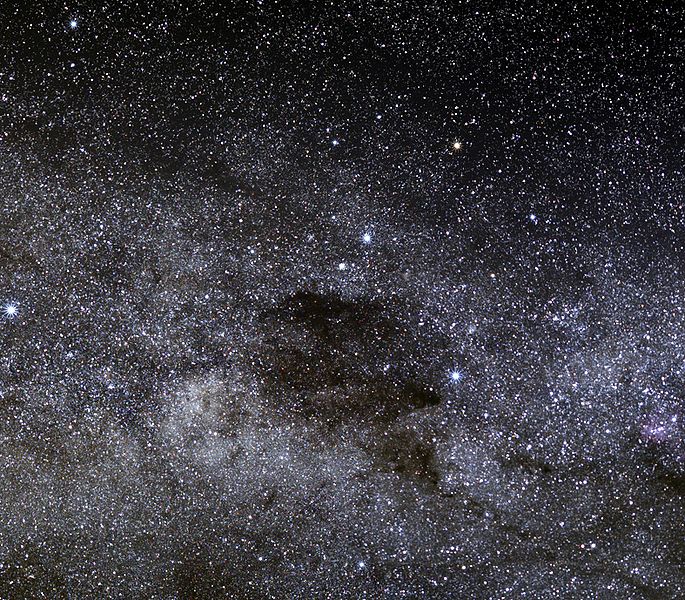Fichier:Coalsack-ESO-B06.jpg

Taille de cet aperçu : 685 × 600 pixels. Autres résolutions : 274 × 240 pixels | 548 × 480 pixels | 877 × 768 pixels | 1 170 × 1 024 pixels | 1 574 × 1 378 pixels.
Fichier d’origine (1 574 × 1 378 pixels, taille du fichier : 1,22 Mio, type MIME : image/jpeg)
Historique du fichier
Cliquer sur une date et heure pour voir le fichier tel qu'il était à ce moment-là.
| Date et heure | Vignette | Dimensions | Utilisateur | Commentaire | |
|---|---|---|---|---|---|
| actuel | 21 novembre 2009 à 18:58 |  | 1 574 × 1 378 (1,22 Mio) | Fabian RRRR | {{Information |Description={{en|1=The Coalsack is one of the most prominent dark nebulae visible to the unaided eye. A beautiful sight in the southern sky, the Coalsack casts a dark silhouette against the Milky Way’s bright stripe of stars. The Coalsack |
Utilisation du fichier
Les 3 pages suivantes utilisent ce fichier :
Usage global du fichier
Les autres wikis suivants utilisent ce fichier :
- Utilisation sur de.wikipedia.org
- Utilisation sur el.wikipedia.org
- Utilisation sur en.wikipedia.org
- Utilisation sur fi.wikipedia.org
- Utilisation sur ja.wikipedia.org
- Utilisation sur pl.wikipedia.org
- Utilisation sur ru.wikipedia.org
- Utilisation sur simple.wikipedia.org
- Utilisation sur sk.wikipedia.org
- Utilisation sur sv.wikipedia.org
- Utilisation sur tl.wikipedia.org

